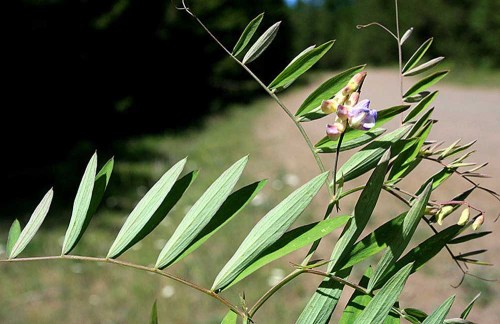American vetch a good luck charm
Published 12:58 pm Thursday, July 26, 2018

- American vetch, Vicia americana
Name: American vetch
Scientific name: Vicia americana
Trending
American vetch is a widespread member of the pea family, found from Alaska and across Canada to Quebec, and south to California to Texas, and Missouri to Virginia. The genus Vicia is the Latin name of vetch plants since early Roman times. There are about 200 species of vetch worldwide. This vetch covers most of the upper 2/3 of the continent, easily earning the name American. It is not the most common vetch of the six in northeast Oregon, but can be found in scattered locations in the Blue Mountains at middle-elevations, usually blooming in mid-summer.
Vicia americana is not weedy, and nothing like the aggressive vetch that makes large purple, tangled patches several feet across on the lower levels of Cabbage Hill near Pendleton. American vetch is a low, scrambling vine that seldom grows over 2 feet long. It has pinnately compound leaves, each leaf having 8-12 slender, linear to narrowly lance-shaped leaflets lined up opposite each other in 4-6 pairs. The tip of each leaf ends in a tendril that often branches into 2-3 grasping tips.
The flowers are borne in small clusters of about 4-6 small, blue to purplish pea-like flowers. The fruit is a linear pod about 2-3 inches long with several seeds inside.
Vicia americana has been used by several southwest and northwest Indian tribes for a variety of purposes. Medicinal uses included treatment for soreness and spider bites, as an eyewash, a “life” medicine, and as a “love” medicine. Several tribes used the plant for food, including cooking it or as greens, and preparing the stems and pods by boiling or baking. It was also used as fodder for horses and cattle. The fibrous roots were used to tie objects and also as a good luck charm when gambling.
Where to find: Look for it along roadsides in shady woods around 5,000 feet elevation. It is one of the few perennial plants that hasn’t dried up yet this summer.









